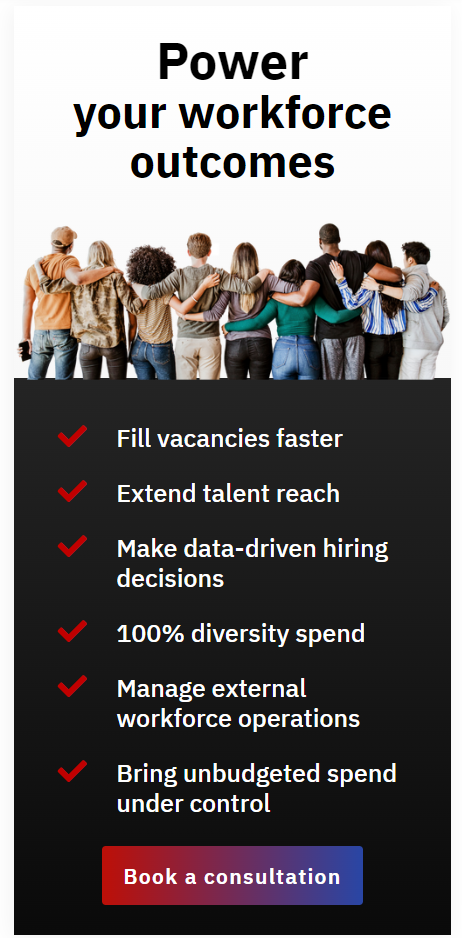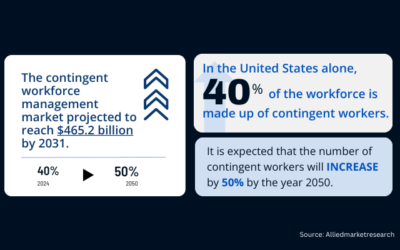Adam Klaucke & Shane Corso - 4.5 min read
Overcoming Executive Resistance: The Key to Successful MSP Program Implementation
In today’s dynamic business landscape, Managed Service Provider (MSP) programs have emerged as an indispensable tool for managing contingent labor effectively. However, transitioning from decentralized contingent labor management to a centralized MSP model is not without its challenges. A primary hurdle among these challenges is securing robust executive buy-in, which serves as a crucial element for successful program implementation and sustained utilization.
This white paper discusses the critical importance of executive buy-in for MSP program success, identifies common obstacles faced in obtaining such support, and outlines proactive strategies to overcome these challenges. Drawing upon real-world experiences and best practices, this paper offers actionable insights for organizations seeking to navigate the complexities of MSP program adoption and drive meaningful organizational change.
Introduction
In the realm of contingent labor management, MSP programs offer a streamlined approach to sourcing, managing, and optimizing temporary talent. By centralizing processes and leveraging technology, MSPs provide greater efficiency, cost savings, and risk mitigation. However, the realization of these benefits hinges upon the unwavering commitment of executive stakeholders.
Historically, some organizations have failed to garner executive support for MSP initiatives. Concerns surrounding process disruption, implementation complexities, and budgetary implications often deter executives from fully embracing the transition. Yet, it is precisely this executive buy-in that distinguishes a well-executed MSP program from one that falters.
The Importance of Executive Buy-In
Executive buy-in is more than just a symbolic gesture; it is the catalyst for organizational transformation. When executives endorse an MSP program, they signal to the broader organization that the initiative is not merely a peripheral undertaking but a strategic imperative. Their support lends credibility to the program, instills confidence among stakeholders, and facilitates the allocation of resources necessary for its success.
Moreover, executive buy-in sets the tone for organizational culture. When leaders champion change initiatives, they inspire confidence, foster collaboration, and cultivate a shared sense of purpose. Conversely, the absence of executive support can breed skepticism, resistance, and ultimately, undermine the efficacy of the MSP program.
Challenges to Executive Buy-In
Despite the evident benefits of MSP programs, securing executive buy-in remains a formidable challenge for many organizations. Several factors contribute to this reluctance, including:
- Failure to Demonstrate Value: Organizations and their MSPs have struggled to effectively articulate the MSP program’s value proposition to executive stakeholders. Without a clear understanding of the tangible benefits and return on investment, executives may hesitate to commit resources and support to the initiative.
- Fear of Disruption: Executives may fear that implementing an MSP program will disrupt existing processes and workflows, leading to operational inefficiencies and employee discontent.
- Perceived Complexity: The perceived complexity of MSP implementation, including technological integration, vendor management, and compliance requirements, can deter executives from endorsing the initiative.
- Initiative Fatigue: Executive stakeholders may already be overwhelmed by the sheer volume of ongoing initiatives within the organization. The introduction of yet another program, such as an MSP initiative, may be met with resistance simply due to limited bandwidth and competing priorities.
Addressing these concerns requires a proactive and strategic approach to engagement, communication, and relationship-building.
Strategies for Overcoming Resistance
To overcome executive resistance and secure buy-in for MSP programs, organizations must adopt a multifaceted approach that addresses the underlying concerns while articulating the value proposition of the initiative. Key strategies include:
- Program Assessment: Conduct a comprehensive assessment of current contingent labor practices, potential risks, and areas for improvement. This assessment should include an analysis of spend, headcount, turnover, onboarding processes, and offboarding compliance, such as onboarding, offboarding, employment type, and other organizational requirements.
- Proof of Concept: Implement a pilot or proof of concept to demonstrate the tangible benefits of the MSP program in a controlled environment. This allows executives to witness firsthand the potential impact on efficiency, cost savings, and other organizational benefits.
- Transparent Communication: Establish open lines of communication with executives, providing clear and concise information about the benefits, risks, and implementation plan of the MSP program. Address concerns candidly and proactively, fostering a sense of trust and transparency.
- Tailored Engagement: Recognize that different executives may have varying perspectives and priorities. Tailor your messaging and engagement strategies to resonate with each stakeholder, emphasizing the specific benefits and relevance of the MSP program to their areas of responsibility.
- Showcase Success Stories: Highlight success stories and best practices from comparable organizations that have successfully implemented MSP programs. Concrete examples and tangible results can alleviate doubts and inspire confidence among executives.
- Provide Ongoing Support: Commit to providing ongoing support and guidance throughout the implementation process and beyond. Offer training, resources, and assistance to ensure that executives feel equipped to navigate any challenges that arise.
- Establish Accountability: Develop a clear roadmap for MSP implementation, outlining key milestones, responsibilities, and performance metrics. Hold executives accountable for their roles in driving program adoption and success, reinforcing a shared commitment to the initiative’s objectives.
Executive buy-in is indispensable for the successful implementation and utilization of MSP programs. By addressing concerns, fostering communication, and demonstrating value, organizations can overcome resistance and enlist the support of key stakeholders. By securing executive endorsement, organizations can unlock the full potential of MSP programs, driving efficiency, agility, and competitiveness in today’s evolving business landscape.
You may also like:
MSP Analytics: Driving Insights for Smarter Contingent Workforce Decisions
MSP Analytics: Driving Insights for Smarter Contingent Workforce DecisionsTop talent has never been more in demand, but traditional methods of sourcing highly skilled workers aren’t working. Competition is fierce, and your organization is vulnerable to a shortfall in...
AI Should Augment Human Intelligence, Not Replace It
Will smart machines replace human workers? How human intelligence can work with artificial intelligence to produce augmented intelligence.
Reducing Contingent Labor Costs: Strategies for Maximizing Efficiency
Discover how Workspend can help you reduce contingent labor costs and boost efficiency. Gain insights, implement strategic sourcing, optimize workforce planning, and ensure compliance. Partner with us for streamlined solutions. Contact us today!





